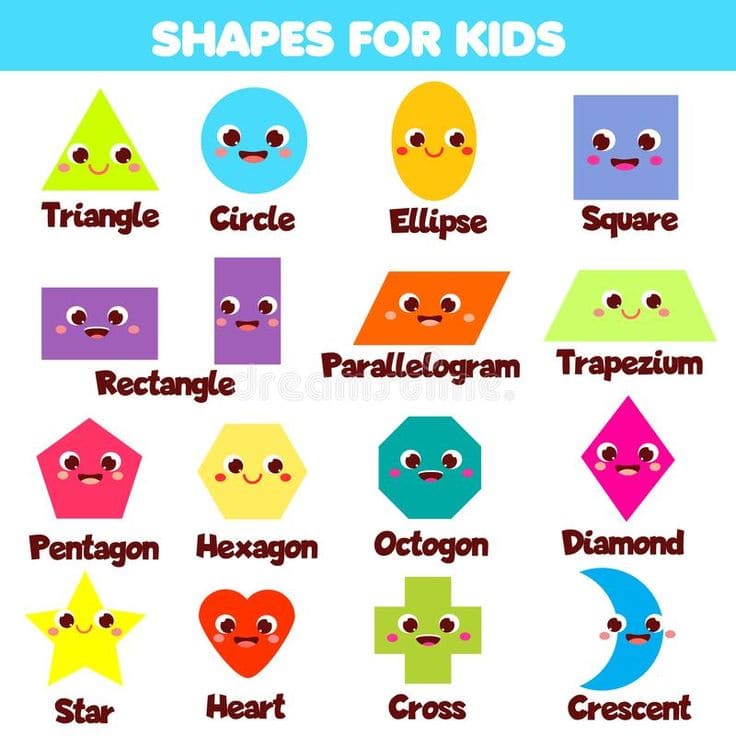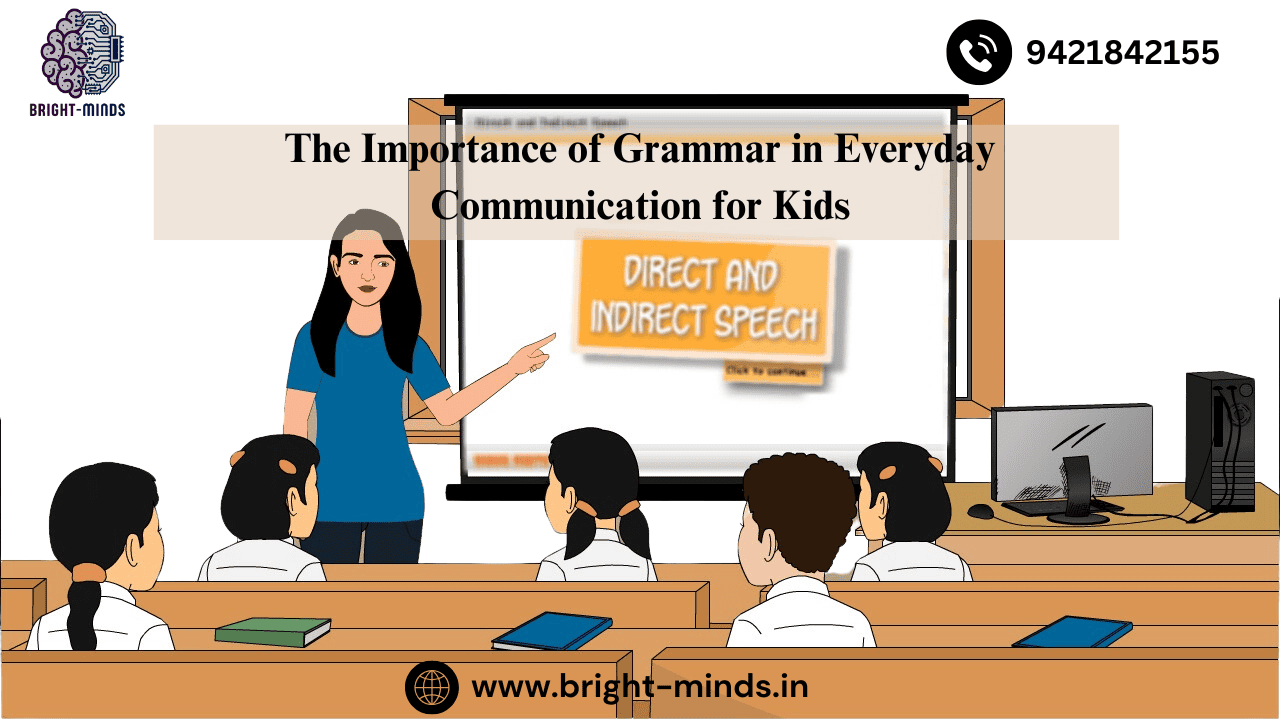Introduction
Any language’s foundation is its grammar. It is the structure that enables us to communicate effectively through writing, speaking, and even thought. Early grammar instruction is essential for children’s development of efficient communication abilities. This blog will discuss the importance of grammar for children, how it affects their everyday communication, and useful strategies for promoting its study in an interesting way.
1. What Is Grammar, and Why Does It Matter?
Grammar is the collection of rules that determine how sentences are put together in a language. It covers things like punctuation, sentence structure, and parts of speech, among other things. But why is it important?
a. Clarity in Communication
Sentences that lack proper grammar can be misunderstood. For instance, “Let’s eat Grandma!” and “Let’s eat, Grandma!” indicate very different things.
b. Building Confidence
Children who use proper grammar feel more comfortable sharing their thoughts in written essays, class discussions, and casual conversations.
c. Academic Success
An essential component of school curricula is grammar. Children who have a solid command of grammar perform better in courses that call for reading, writing, or presentations.
d. Social Interaction
Improved connections are fostered by clear communication. Children who are proficient in grammar are able to express themselves clearly, which facilitates communication with adults and their peers.
2. How Grammar Shapes Everyday Communication for Kids

a. Speaking
Grammar guarantees that the meaning of spoken words is conveyed. For example:
- Incorrect: “I goed to the park.”
- Correct: “I went to the park.”
b. Listening
Children who comprehend grammar are better able to interpret what they hear. It enables youngsters to understand stories, obey directions, and react correctly.
c. Writing
Children write on a daily basis for everything from homework to thank-you messages. Their writing will be readable and powerful if it is written with proper grammar.
d. Reading
Understanding is aided by grammar. Children are better able to comprehend books and appreciate stories when they are able to identify sentence structures and punctuation.
3. Common Grammar Challenges Kids Face
a. Irregular Verbs
It can be challenging to learn irregular verbs in the past tense. For instance, “go” turns into “went,” not “goed.”
b. Subject-Verb Agreement
Children frequently have trouble connecting the proper verb form to the singular and plural subjects. For instance:
- Incorrect: “She walk to school.”
- Correct: “She walks to school.”
c. Punctuation
Young students may find it difficult to understand the use of commas, periods, and question marks.
d. Homophones
Children are frequently confused by words like “there,” “their,” and “they’re.”
4. Fun Ways to Teach Grammar to Kids
a. Interactive Games
Grammar instruction is made entertaining and interesting by games like “Sentence Scramble” and “Grammar Bingo.”
b. Storytelling
As they concentrate on particular grammar principles, encourage children to write stories. Ask them to write a story with solely past tense verbs, for instance.
c. Visual Aids
Complicated grammar ideas can be made simpler with the use of charts, flashcards, and vibrant posters.
d. Songs and Rhymes
Grammar is made memorable and entertaining by songs like Schoolhouse Rock’s “Conjunction Junction.”
e. Digital Tools
Kids can learn interactive courses from websites and apps like Khan Academy, Grammarly, and Duolingo.
5. Practical Tips for Parents and Teachers
a. Model Good Grammar
Youngsters learn up knowledge through imitation. Set a good example by speaking and writing clearly.
b. Encourage Reading
Children are exposed to good grammar in context through books. Choose novels with captivating stories that are age-appropriate.
c. Practice, Don’t Preach
Include grammatical drills in everyday discussions. For instance, fix mistakes gently without being too critical.
d. Celebrate Progress
Give children praise when they use proper language to boost their self-esteem and motivate them to continue learning.
e. Set Real-Life Challenges
Ask children to use good grammar when writing brief journal entries, birthday greetings, or grocery lists.
6. How Grammar Impacts a Child’s Future
a. Academic Achievement
A strong foundation in grammar enables children to do well on essays, oral presentations, and standardized tests.
b. Career Readiness
Good grammar is the foundation of strong communication abilities, which are necessary for success in any line of work.
c. Personal Relationships
Clear communication of thoughts and feelings is made possible by grammar, which promotes greater comprehension and closer bonds between people.
d. Cognitive Development
Children who study grammar are better able to think critically and solve problems because they are able to examine language norms and structures.
7. Addressing Grammar Anxiety in Kids
Grammar rules might be intimidating to some kids. Here’s how you can assist:
a. Make It Fun
Include originality and fun in your lessons. For instance, ask students to use the new grammatical rules to compose absurd statements.
b. Focus on Progress
To maintain motivated, acknowledge minor victories. Don’t just concentrate on your errors.
c. Offer Support
Be understanding and accessible to respond to inquiries or offer additional practice as required.
d. Provide Context
Give instances from everyday life to illustrate the significance of grammar, such as drafting an email that is clear or reading a tale with ease.
8. Examples of Everyday Grammar in Action
a. Morning Conversations
- “What did you eat for breakfast?” asked the parent.
- “I ate cereal,” said the child.
- “You ate cereal,” should be corrected.
b. Homework Time
Children should be encouraged to proofread their writing for grammatical problems, such as punctuation or subject-verb agreement.
c. Playtime
Provide opportunities for children to practice grammar, such as when they write grocery lists and play “store.”
d. Bedtime Stories
Talk about the grammatical components of stories, like recognizing verbs and punctuation.
Conclusion
Grammar is a tool that helps children communicate clearly and confidently; it’s not merely a set of rules. Parents and educators can make grammar a positive and pleasurable experience for their children by incorporating entertaining and useful techniques into their learning process.
Also Read:
https://bright-minds.in/unlocking-word-meaning-for-class-ukg-english-to-hindi/

